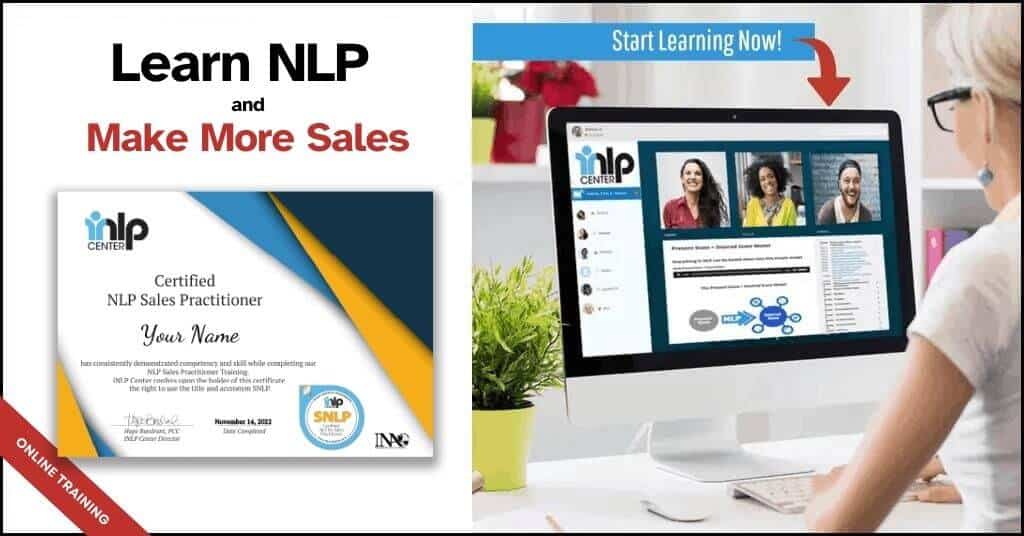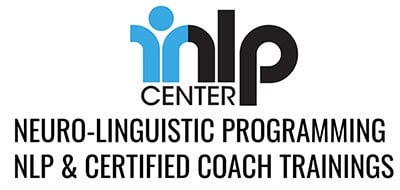Whether you are new to sales, or an experienced sales veteran, consider these top 7 sales tips that you may not know about.
As a young man in sales I was looking for any piece of advice I could get to help me to become better at the sales process. I imagine you are too.
The internet is filled with “lists of 75 ways to sell anything” or “1001 methods for closing clients”. This isn’t one of them.
In this post, you’ll discover 7 actionable bite-size tips I wish I knew when I started my sales career. I’ve taught these tips to many students and mentees over the years and it’s helped them increase their sales figures and grow their love for the work.
Let’s dive in.
- 1. Learn Neuro-Linguistic Programming
- 2. Don’t Be a Salesperson If Your Only Motive Is Money
- 3. Invest Time in Building Rapport and Trust with Prospects
- 4. Let Prospects Know What to Expect
- 5. Speak Your Customers’ Language
- 6. Embrace Objections as Signs of Interest
- 7. Project Confidence and Calm When Closing
- 8. Act confident when presenting costs and asking the customer to commit
- 9. Know your numbers
- 10. Address financial objections
- 11. Use Silence to Your Advantage
1. Learn Neuro-Linguistic Programming
I spent a long time early in my career in sales doing a poor, to average, job. My heart was in it, but I still seemed to come up short more than I was winning.
After many years I ran into NLP (short for Neuro-Linguistic Programming).
While there is no official definition of NLP, I define it as the study and implementation of successful communications and subjective behaviors.
I wanted to improve my sales acumen. So, I enrolled in NLP Sales Training at the INLP Center—a self-paced online course I have the pleasure of teaching today.
During the training, I learned new skills and techniques that immediately improved my sales. The tools I acquired not only helped me sell more but also build stronger relationships with customers. In other words, not only were my paychecks increasing, but I also found myself excited to go to work each day to find out whom I could meet next.
Learning NLP at the iNLP Center will help you unlock the keys to excellent communication skills and techniques, as well as top-notch behavioral skills. This will enable you to become a better people person than you ever imagined.
No salesperson is perfect. Mistakes happen despite preparation or a good sales process. But to excel, we must minimize them.
NLP offers various methods to overcome sales process mistakes. Whether you need to be resourceful or inspire clients through speech, NLP provides tools to improve communication.

2. Don’t Be a Salesperson If Your Only Motive Is Money
There is nothing wrong with making a lot of money.
I have seen many people getting into sales only for the money. These people don’t like to make phone calls, they don’t like the product or service they sell, and sometimes they don’t even like people that much.
They may last days, weeks, or even a few years on the job. But there is typically a breaking point.
Sales can be a challenging business. If you do not love it, you are not likely to do it for long.
There are outliers. I have seen less than enthused salespeople have a great month or quarter. And I have also seen “sharks”—salespeople who prey upon people with less than ethical techniques—make a ton of money in the short term. But they made no lasting relationships and secured no sales for the future.
If you want to be a great salesperson, you must build ethical relationships and enjoy the processes of selling.
Money shows up when you love what you do and do it with honor. This first sales tip goes for anything in life.
3. Invest Time in Building Rapport and Trust with Prospects
We’ve all experienced the following situation when shopping for cars, phones, shoes, or jewelry.
The salesperson races up to greet you. They start babbling on about the amazing products and the great sales they have. They say: “You need it, you deserve it, let’s go sign the papers and get the deal done.”
If you are anything like me, your mind goes, “Pump the brakes, please!”
You tell the eager salesperson, “I’m just looking”. Then you hide from them the remainder of your time in the store or simply leave.
This example, unfortunately, is a typical sales experience.
When a potential customer is bombarded with information, not listened to, and asked to buy on the spot, the likelihood of them buying is slim to none. There’s not enough rapport and trust between the customer and the salesperson.
Reports have shown that nearly 60% of consumers will refuse to purchase services or goods from companies and salespeople they don’t trust. And about 50% will tell their friends and colleagues about a poor buying experience.
On the other side, over 75% will make a purchase, nearly 60% will advocate, and 50% will pay more for products and services when they trust you.
Taking the time to build rapport and trust with potential customers is one of the most overlooked and forgotten elements of the sales process.
People don’t buy from salespeople; they buy from friends.
So bring a proper mindset to every sales opportunity. Leave your problems from home and the office out of it. Approach every client with genuine excitement. Be curious about them. Build commonalities where you can and work toward a true bond and friendships.
4. Let Prospects Know What to Expect
Give potential customers a clear set of expectations as to what will take place throughout the sales process.
This helps eliminate potential fears your prospects might have. It gives them certainty and builds trust. When a client has certainty, they take action. But where there is no certainty, there is no sale.
Imagine a friend gave you a map and told you to travel a specific road.
In addition, they told you that there would be a gas station 3 miles ahead on the right and a beautiful lake house on the left. The path there would be a recently renovated paved road. And they also told you that while walking, you’d be surrounded by beautiful nature.
Would this increase your confidence in your journey down the road? Absolutely! This is exactly why this is a powerful tool to use in your sales process.
Yet, most salespeople I’ve met don’t use this strategy—either because they are unaware of its importance or because they neglect it. Learning this skill will skyrocket your ability to sell services and goods.
5. Speak Your Customers’ Language
It is hard to sell a service or good if you don’t know what your customer wants.
Salespeople often make two key mistakes: not listening to the customer’s information and not clarifying the vague details the customer provides.
Listen to the customer and focus on details that point towards a yes. Pay attention to the needs they want to have met. Note their hot buttons, pain points, and other satisfaction criteria.
Nothing is more powerful than listening to the words a customer uses and matching them back to their criteria, needs, and satisfaction points.
When a customer is vague, specify their unclear language and get to the root of what they want.
Also, understand the customer’s why. Why is it important for them to have what you are offering? Listen to their words and match them to their why.
When you listen to a customer’s needs, specify what they want, understand the customer’s why, and put it all together for them in their language, you will increase the rapport and be well on your way to making a sale.
On the other hand, if you skip this step, it can create issues. You may make the product or service seem too complex or miss the customer’s emotional triggers. You could highlight unimportant features or, worse, suggest the wrong product during a presentation.
6. Embrace Objections as Signs of Interest
You have probably heard the saying, “You don’t get paid for how you handle the yes, you get paid for how you handle the no.”
Overcoming objections is one of the most important skills for a salesperson to master.
I have worked with and led many salespeople. I have heard some say that they hope they do not get any objections or concerns.
In my experience, if a client or customer doesn’t raise any objections or concerns, they are likely not emotionally invested in the product or presentation. Objections and concerns are how customers show genuine interest in a potential purchase.
Spend time learning how to discover early objections. Practice isolating objections and identifying the right time to overcome them.
Learn when to be vague and when to be specific when challenging concerns. Sometimes the customer needs obvious answers. Other times, they need you to help them open their creativity so they can find their own answers from within.
Overcoming and satisfying customer concerns and objections is scary to many salespeople.
Reframe it as the customer letting you know that they are interested in what you have to offer. Once you can see things from this perspective, you are well on your way to improving your salesmanship and your career in sales.
7. Project Confidence and Calm When Closing
How do you close the sale? This is one of the most often-asked questions that I get from salespeople.
You can’t answer it until first learning the six other sales tips in this article. That’s like trying to ice a cake before learning how to bake one.
Once you have learned to fulfill the customer’s needs, you should no longer be selling, the customer should be buying.
To ensure that this happens, keep some of these things in mind:
8. Act confident when presenting costs and asking the customer to commit
It’s easy to let your mood get stale and allow fears, doubts, and worries to take over. Stay in a resourceful state of mind and pace yourself to the finish line.
9. Know your numbers
If you stumble through your numbers, you will confuse your customers. This is the last thing you want if you’re going to make a sale. Know all the numbers of what you sell like the back of your hand.
10. Address financial objections
During closing, objections may arise, but ideally, they should only be about money. If you’re still facing objections about the product or service, that’s a problem. You can overcome these objections, but it sets you back, potentially prolonging the sales process and giving the customer a chance to back out. Address financial objections as you would others: soothe their concerns and secure the commitment.
11. Use Silence to Your Advantage
Refrain from talking too much.
As a young salesman, I was talking way too much at the close. I would talk my way out of the sale. I lost a lot of money trying to justify the cost of what I was selling and the benefits of buying.
During a close, the customer feels pressure. When you ramble, you take that healthy pressure off of them.
A better approach is to ask your questions and then let silence work its magic. Silence is potent; it compels the client to speak. The first to speak after the question assumes the pressure. If it’s you, you likely lose the sale.
Over-talking also tends to complicate the sales process. When explaining terms and conditions or fees, aim for simplicity. Customers can get cold feet if they feel overwhelmed by details.
Stick to questions and ensure your prospect is keeping up. Avoid asking if they “understand” or if something “makes sense”. These phrases can make them feel belittled or embarrassed.
Instead, ask, “Do you have any questions?” or “Would you like more details on anything?” This approach puts them at ease and gives them a sense of control over the buying process.

If the relationship between a counselor and client is not strong, if rapport is not established, effective counseling is very unlikely to occur. To that end, NLP offers several strategies. To build natural rapport with clients more quickly, follow the…
Continue Reading Counselors: How to Build Natural Rapport with NLP
Neuro-Linguistic Programming (NLP) and Solution-Focused Therapy (SFT) are both powerful modalities that can be used to facilitate personal growth and change. Neuro-Linguistic Programming (NLP) Coaching NLP is a model of communication and personal development that explores the connection between the…
Delving into the world of personal development and communication improvement often leads us to a captivating toolset called Neuro-Linguistic Programming (NLP). But what exactly is NLP, and how can it empower you? This comprehensive guide, offered by the International NLP…
Continue Reading What is NLP? Why You Should Learn Neuro-Linguistic Programming
Imagine the thrill of witnessing your clients achieve breakthroughs and “aha moments” in each session. That’s the power of coaching! Equipped with specific skills and models, an NLP Coach can facilitate transformations consistently. This leads to exceptional results and keeps…
Continue Reading Top 9 NLP Skills to Be an Effective NLP Coach
NLP Timeline refers to the way you organize the concept of time on the inside. Everyone needs a way to differentiate among the personal past, present, and future. Otherwise, you’d have no way of knowing if that romantic walk on the…
Continue Reading The NLP Timeline Technique ~ How it Can Change your Life
NLP sales techniques use simple ideas from psychology to help you sell better. These tools can make a big difference in how you connect with customers and close deals. Imagine being able to meet a potential buyer with absolute confidence.…
Continue Reading 5 Essential NLP Sales Techniques That Could Help You Sell More



